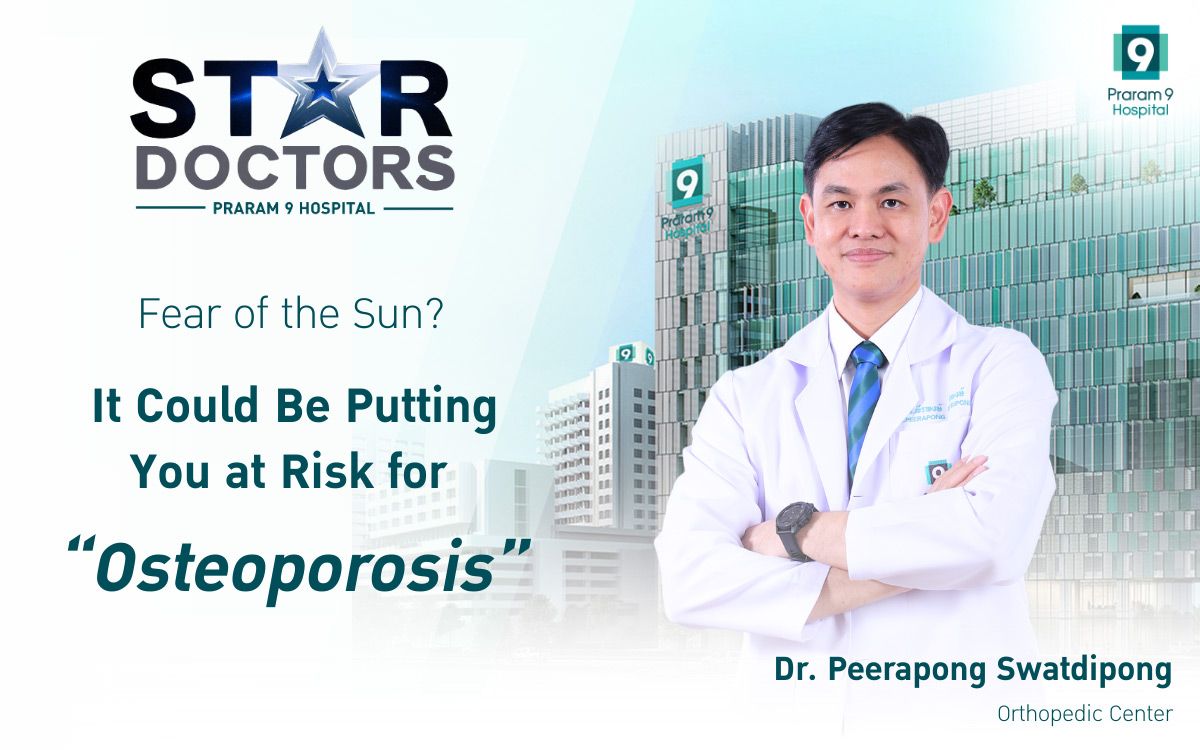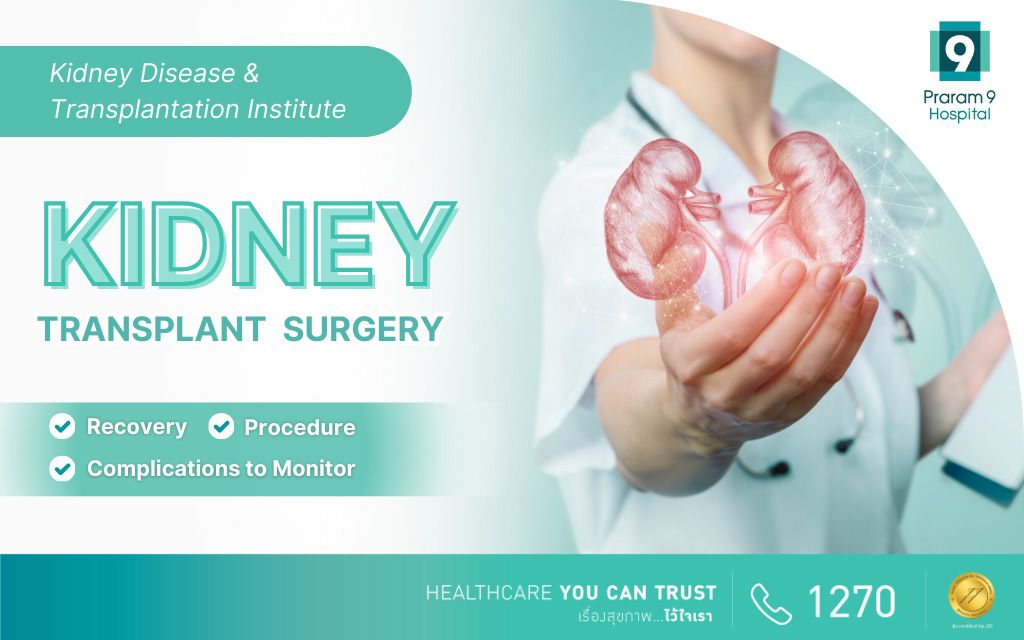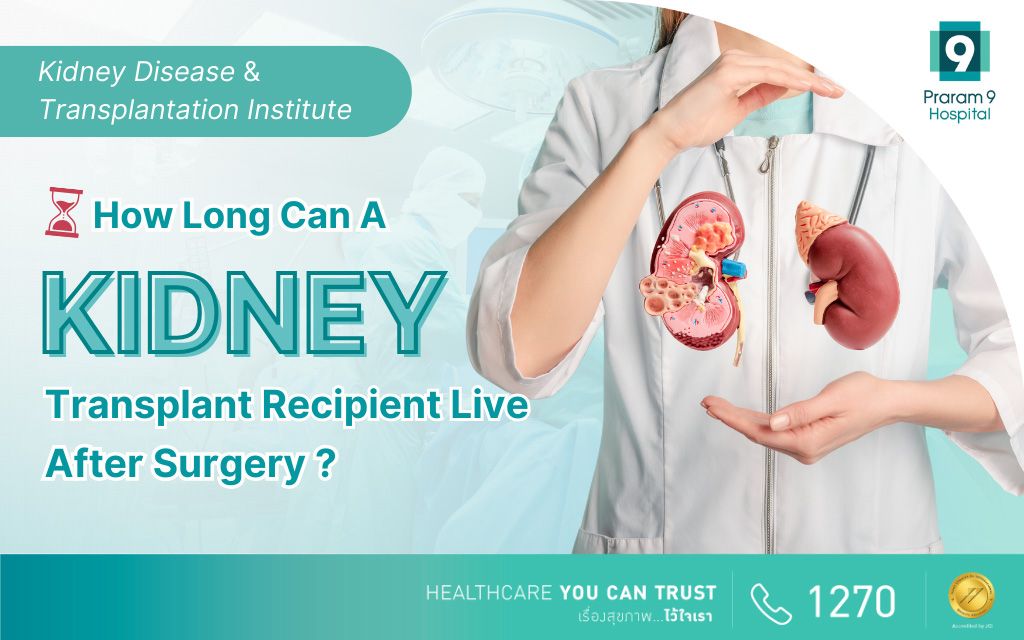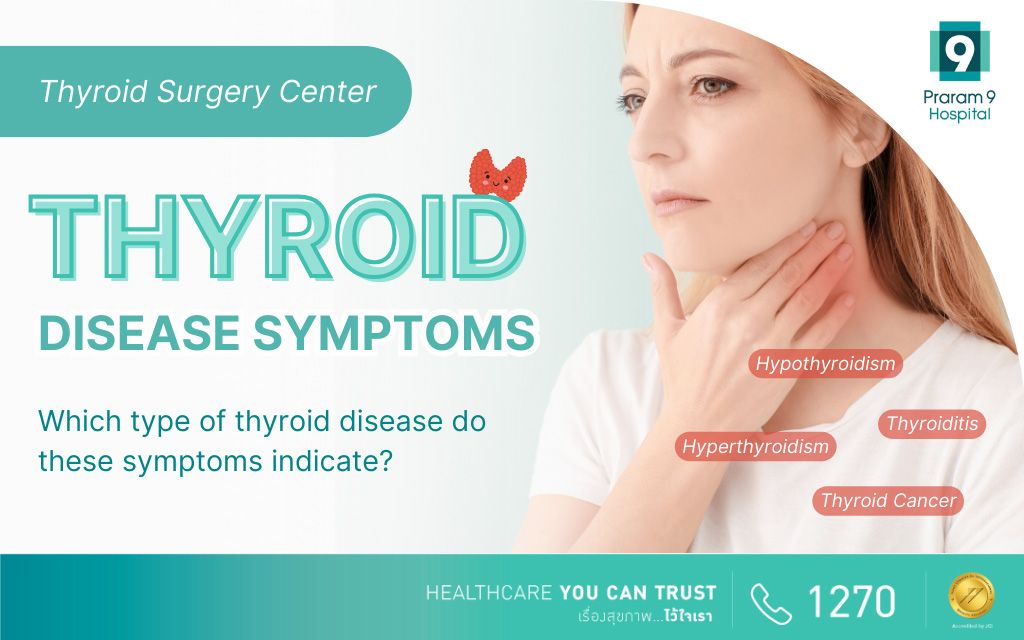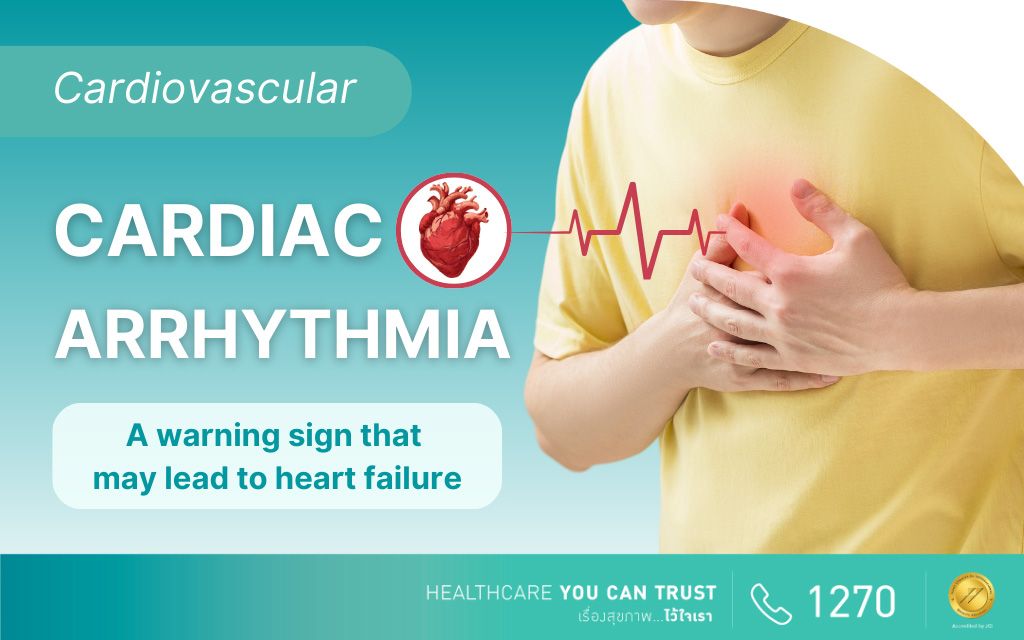Health Articles
Knowledge
Knee Osteoarthritis: Treatment and Prevention for a Happier Life

Knee Osteoarthritis is a common condition, especially among the elderly. In Thailand, it affects 50% of individuals aged 65 and older, with some cases beginning in middle age and progressing into old age.
Patients often experience knee pain, limited mobility, and a cracking sound when moving the knee. Daily activities, such as walking long distances or climbing stairs, become increasingly difficult, and pain may persist when standing or sitting.
Fortunately, knee osteoarthritis can be managed, and its progression can be slowed. Raising awareness and practicing proper prevention strategies are key to maintaining knee health.
What Is Knee Osteoarthritis and Its Causes?
Knee Osteoarthritis is the inflammation and degeneration of the knee joint caused by damage to the cartilage, which normally cushions and absorbs shock. This cartilage provides smooth, frictionless movement. When it deteriorates, the underlying bones beneath may rub together, leading to inflammation, pain, swelling, stiffness, and in severe cases, joint deformity.
Common characteristics include:
- Loss of cartilage, leaving the joint exposed.
- Thinning, cracking, and deterioration of the joint surface.
- Inflammation of the joint lining, resulting in excess joint fluid and swelling.
- Bow-legged (most common) or knock-kneed deformities in advanced stages.
Warning Signs and Symptoms of Knee Osteoarthritis
Knee Pain During Activities: Patients with osteoarthritis of the knee often experience knee pain during activities such as while walking, climbing stairs, squatting, or sitting cross-legged. They may find it difficult or impossible to sit in a kneeling position due to pain. Occasionally, the knee may give way while walking, caused by sharp pain within the joint.
Limited Movement: Movement of the knee is often restricted. Patients may find it difficult to fully extend or bend the knee, experiencing stiffness in the joint and a sensation of the joint being “stuck” or less flexible.
Progressive Pain: Pain in knee osteoarthritis can present as a dull ache, sharp, or stabbing sensation along the knee joint. This pain typically worsen as the joint surface deteriorates. While pain may subside temporarily, untreated osteoarthritis leads to ongoing joint damage. Over time, pain may persist or intensify, and in advanced stages, patients may experience significant discomfort and limited knee movement.
Advanced Stage Symptoms: In the late stages of the disease, symptoms become more severe. Leg deformities may develop, and pain can become debilitating, often preventing patients from walking. Stiffness and difficulty in movement are especially noticeable after prolonged sitting or lying down. However, movement often improves slightly after using the joint for a short time.
Stages of Knee Osteoarthritis
Osteoarthritis of the knee is classified into four stages, based on the severity of cartilage wear and the intensity of symptoms experienced by the patient:

Stage 1: Early Stage
- At this initial stage, cartilage deterioration in the knee joint is minimal.
- Patients may not experience pain or only have very mild symptoms.
- Osteoarthritis is often detected incidentally during routine screenings or X-rays.
Stage 2: Mild Stage
- Cartilage wear increases, leading to joint swelling and pain during knee use.
- A cracking or grinding sound may occur when moving the knee.
- The knee starts losing strength, and stiffness in movement becomes noticeable.
Stage 3: Moderate Stage
- Cartilage degradation progresses to the point where bones in the knee may begin to touch during movement.
- Pain intensifies, especially during activities like walking or bending the knee.
- Swelling becomes more apparent, and the range of motion in the knee is significantly limited.
Stage 4: Severe Stage
- Cartilage in the knee joint is almost completely destroyed, causing the bones to rub directly against each other.
- Patients experience severe and persistent knee pain, even during rest.
- The knee joint may become visibly deformed and swollen, and movement is significantly restricted.
- At this stage, medical intervention, often involving advanced treatments, becomes essential to manage the condition.
Why Early Diagnosis and Treatment Matter
If you notice early warning signs of osteoarthritis, it is crucial to consult a doctor promptly. Early diagnosis allows for timely treatment, which can slow disease progression, alleviate symptoms, and reduce the need for knee surgery in the future.
Causes of Knee Osteoarthritis
Factors contributing to knee osteoarthritis include:
- Abnormal knee alignment: Bow-legs or knock-knees.
- Aging: Common in individuals over 50, with a higher prevalence in women.
- Obesity: Excess weight increases stress on the knees.
- Repetitive strain: Prolonged kneeling, squatting, or heavy physical activities.
- Previous injuries: Sports injuries or accidents involving the knee.
- Genetics: Family history of osteoarthritis.
- Rheumatoid or gout arthritis: Underlying joint diseases.
How to Manage Knee Osteoarthritis
Key steps for self-management include:
- Avoid excessive strain: Limit squatting, kneeling, and long stair use.
- Weight management: Maintain a healthy weight to reduce knee stress.
- Strengthen muscles: Regular knee exercises.
- Use aids: Consider using knee supports or walking sticks to help alleviate strain.
- Apply compresses: Warm compresses for pain relief; cold compresses for swelling.
- Seek medical advice: Persistent symptoms lasting over two weeks should be evaluated by a doctor.
Treatment Options for Knee Osteoarthritis
Non-Surgical Treatments
- Non-Medication Interventions
- Recommended for patients with mild symptoms.
- Includes consultation and lifestyle advice on proper knee usage and weight reduction (for overweight patients) to decrease pressure on the knee.
- Regular exercise is advised to strengthen the knee and thigh muscles.
- Medication-Based Treatment
- If exercise alone is insufficient or pain becomes severe, doctors may prescribe pain relievers like acetaminophen or anti-inflammatory drugs such as ibuprofen.
- Injections
- Injections into the knee joint may be considered, including lubricating injections to supplement joint fluid.
- Platelet-Rich Plasma (PRP) Injections
- A non-surgical option involving injections of PRP into the knee to alleviate pain and slow degeneration.
- This method is safe and reduces reliance on pain medications.
Surgical Treatments
- Knee Arthroscopic Surgery
- A minimally invasive procedure involving small incisions (6–8 mm) at the front of the knee.
- A camera (arthroscope) and small surgical instruments are used to repair or remove damaged cartilage or bone fragments.
- Suitable for cases with limited cartilage wear or joint obstruction due to torn meniscus or bone fragments.
- High Tibial Osteotomy (HTO)
- Involves realigning the bones to reduce stress on the damaged cartilage.
- Typically used for patients with cartilage wear localized to one side of the knee (often the inner side), especially in younger patients with bowed legs.
- Recovery may take longer, but patients can regain near-normal knee function.
- Partial Knee Arthroplasty (UKA)
- In Thailand, the Unicompartment Knee Arthroplasty (UKA) is commonly performed.
- Only the worn section of the knee is replaced.
- Suitable for patients with localized cartilage wear and minimal knee deformity.
- Total Knee Arthroplasty (TKA)
- Replaces the entire knee joint surface, often in advanced cases of osteoarthritis with severe deformities.
- The damaged joint is replaced with durable, biocompatible materials (metal and synthetic plastic).
- Recommended for patients in the late stages of osteoarthritis.
Prevention and Care for Knee Osteoarthritis
- Maintain a healthy weight: Reducing pressure on the knees.
- Exercise regularly: Low-impact activities like swimming or cycling improve joint health.
- Avoid repetitive knee strain: Minimize activities that put excessive stress on the knees..
- Wear appropriate footwear: Shoes with proper support reduce joint impact.
- Adopt proper movement techniques: Use correct lifting and bending techniques to protect the knees.
- Eat a balanced diet: Rich in calcium, vitamin D, and antioxidants to strengthen bones and joints.
- Avoid smoking and excessive alcohol: These habits impair blood flow and hinder joint repair.
Conclusion
Knee osteoarthritis is a common condition, especially among the elderly, but it can also affect younger individuals due to injury or lifestyle factors. Early diagnosis and proper care can significantly improve quality of life and reduce the need for invasive treatments.
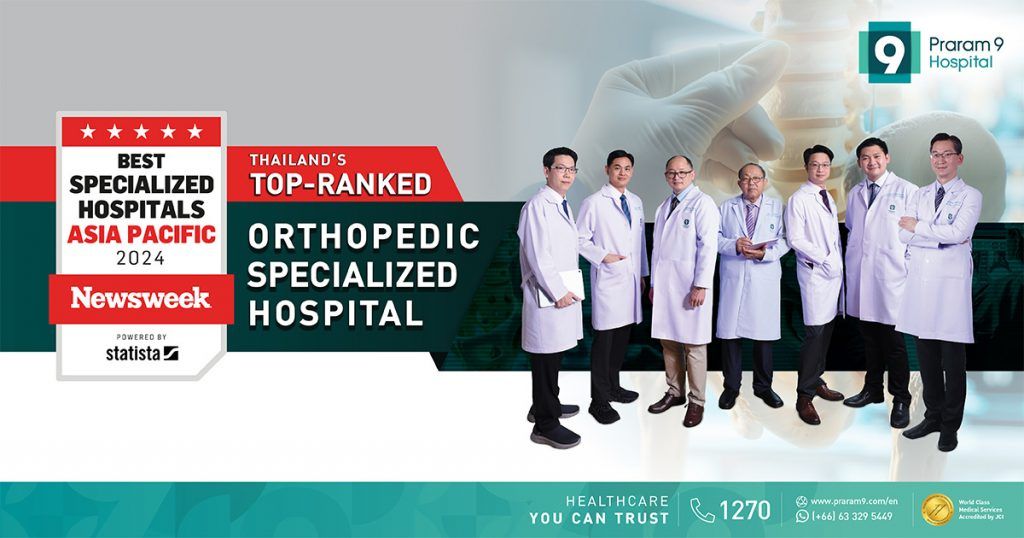
Praram 9 Hospital : Thailand's "TOP RANKED"
Orthopedic Specialized Hospital.
Praram 9 Hospital Orthopedic Center is committed to providing expert consultation, diagnosis, and advanced treatment tailored to every patient. With state-of-the-art equipment and specialist care, we help bring back joy to every step you take.
For more information or urgent, please contact
TEL: 1270 (Local) or +662 202 9999
Email: [email protected]
You can consult a doctor from anywhere through video calls.

